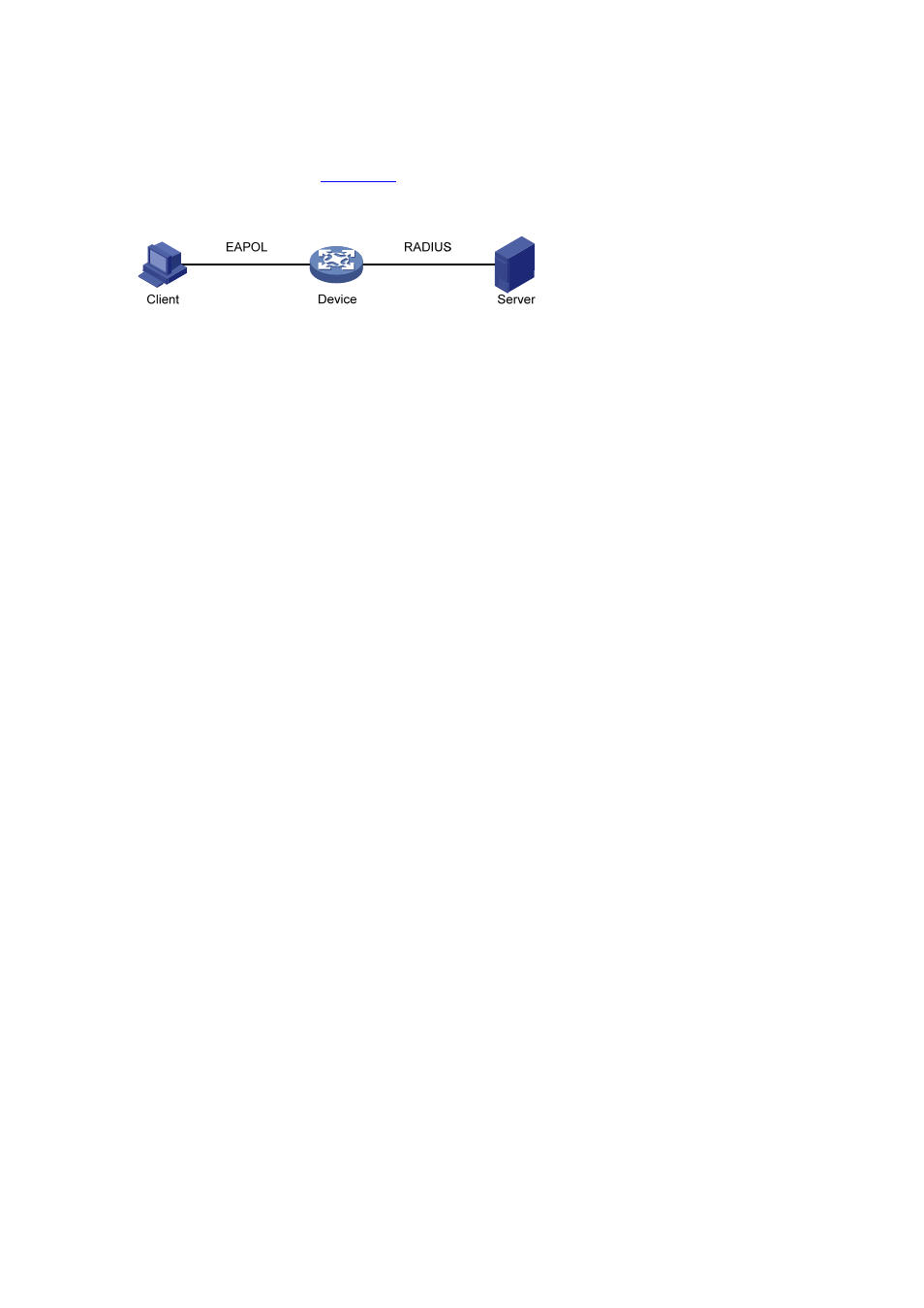Architecture of 802.1x, Authentication modes of 802.1x, Basic concepts of 802.1x – H3C Technologies H3C S7500E Series Switches User Manual
Page 92: Controlled port and uncontrolled port

5-2
Architecture of 802.1X
802.1X operates in the typical client/server model and defines three entities: Client, Device,
and Server, as shown in
.
Figure 5-1 Architecture of 802.1X
z
Client is an entity seeking access to the LAN. It resides at one end of a LAN segment and is
authenticated by Device at the other end of the LAN segment. Client is usually a user-end
device such as a PC. 802.1X authentication is triggered when an 802.1X-capable client
program is launched on Client. The client program must support Extensible Authentication
Protocol over LAN (EAPOL).
z
Device, residing at the other end of the LAN segment, is the entity that authenticates
connected clients. Device is usually an 802.1X-enabled network device and provides
access ports for clients to the LAN.
z
Server is the entity that provides authentication services to Device. Server, normally a
RADIUS (Remote Authentication Dial-in User Service) server, serves to perform
authentication, authorization, and accounting services for users.
Authentication Modes of 802.1X
The 802.1X authentication system employs the Extensible Authentication Protocol (EAP) to
exchange authentication information between the client, device, and authentication server.
z
Between the client and the device, EAP protocol packets are encapsulated using EAPOL to
be transferred on the LAN.
z
Between the device and the RADIUS server, EAP protocol packets can be exchanged in
two modes: EAP relay and EAP termination. In EAP relay mode, EAP packets are
encapsulated in the EAP over RADIUS (EAPOR) packets on the device, which then can
relay the packets to the RADIUS server. In EAP termination mode, EAP packets are
terminated at the device, converted to the RADIUS packets either with the Password
Authentication Protocol (PAP) or Challenge Handshake Authentication Protocol (CHAP)
attribute, and then transferred to the RADIUS server.
Basic Concepts of 802.1X
These basic concepts are involved in 802.1X: controlled port/uncontrolled port, authorized
state/unauthorized state, and control direction.
Controlled port and uncontrolled port
A device provides ports for clients to access the LAN. Each port can be regarded as a unity of
two logical ports: a controlled port and an uncontrolled port.
